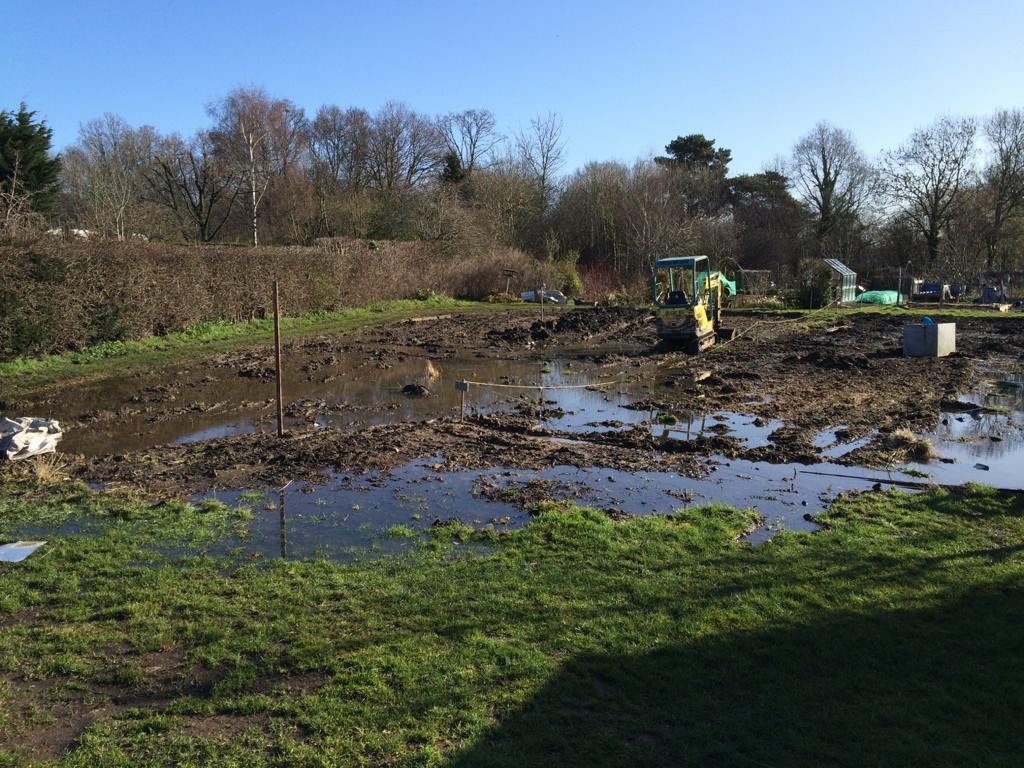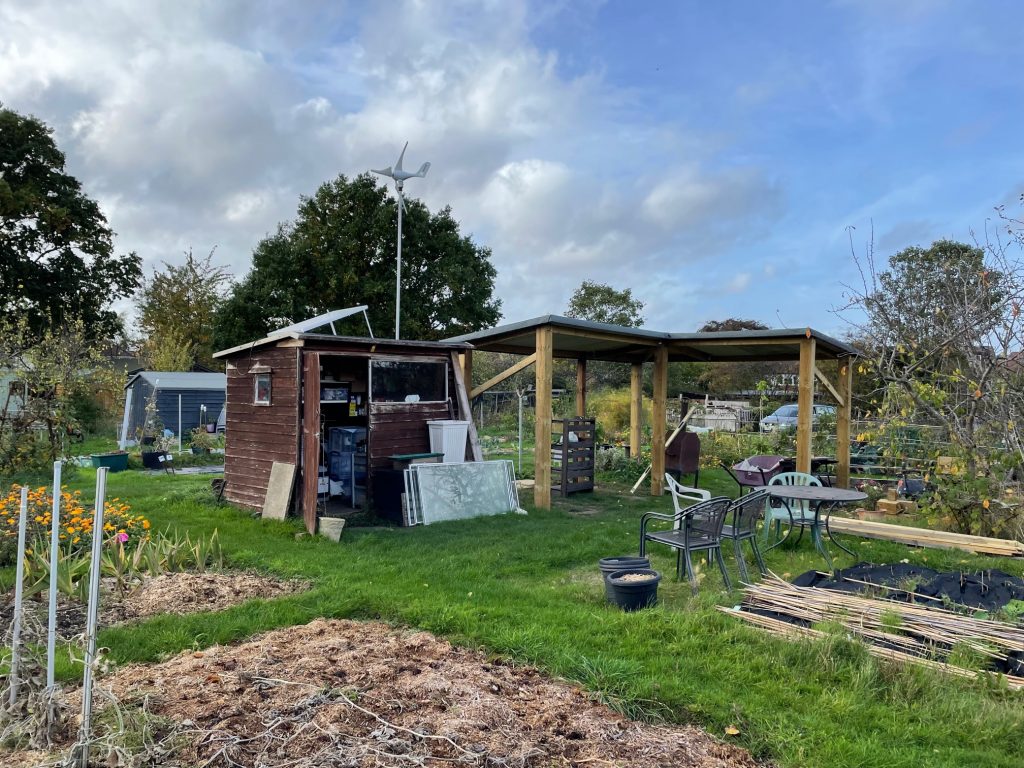Soils
The site is on an area which is predominantly heavy London clay, which is located at varying depths beneath a loamy topsoil. The clay is invariably encountered at about 18 inches and its combination with the loam makes for a fertile soil suitable for the cultivation of most garden crops.
The lower part of the site (north and north western sides) is wetter than the higher area where the soils tend to be more sandy (which means of course there is more watering needed in dry periods). Although there’s only a slight elevation fall over the site, the combination of that with shallow sub soil clay layer means that during heavy rain periods some of the lower laying areas can become flooded (see below for our answer to that).
The site has been cultivated for over 100 years and occasionally you will come across little treasures in the form of pipe fragments, pot shards, even fragments of china dolls have turned up. The site’s rich history is encompassed by these items so keep those eyes peeled when you are digging, you never know what little treasures will turn up.

Drainage
Flooding of the lower areas of the site (the ground gently slopes down towards the north) following heavy rain is experienced several times every year.
In 2015 a trench was dug along part of the northern boundary ending up at an outflow pipe which runs into the golf course. This helped to reduce the flooding to some extent in that area, allowing excess water in/on the soil to drain out.
Starting in late 2021 an additional scheme was started with aim of capturing excess water on other parts of the site and pumping it away. Two trenches were dug across parts of the site to collect water and sumps were added at the lowest points. Pumps and pipes were installed to take the water out of the sumps and move it (eventually) into the 2015 trench.
Since the site has no electricity supply a wind turbine and solar panel were set up to charge batteries which in turn power the pumps. This was completed in February 2022, but then followed the dry and hot summer. With no excess rainwater the system remained unused.
It wasn’t until the end of December 2022 that the ground water levels built up sufficiently to allow water to drain into the sumps. With some tweaking to get the system working properly it started doing it’s job on 31st December 2022. Three weeks later the meter at the end of the system showed over 26,000 litres of excess water had been pumped away. Result!
